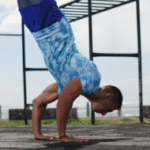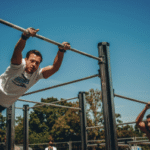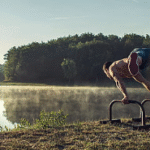Hot and cold therapy
Hot and cold therapy, also known as contrast therapy, involves the strategic use of alternating hot and cold temperatures to stimulate the body’s natural healing processes. This practice has been used for centuries across various cultures and is gaining popularity in modern wellness and athletic recovery. Here’s a detailed breakdown:
Core Principles:
Vasodilation and Vasoconstriction:
Hot therapy (thermotherapy) causes vasodilation, the widening of blood vessels, increasing blood flow to the treated area.
Cold therapy (cryotherapy) causes vasoconstriction, the narrowing of blood vessels, reducing blood flow.
Alternating between these two creates a “pumping” effect, which is believed to enhance circulation and lymphatic drainage.
Methods of Application:
Hot Therapy:
Saunas: Dry heat, typically ranging from 150°F to 195°F (65°C to 90°C).
Steam Rooms: Moist heat, with lower temperatures but higher humidity.
Hot Baths or Showers: Immersing or showering in warm to hot water.
Heating Pads or Hot Packs: Applying localized heat to specific areas.
Cold Therapy:
Cold Plunge Pools or Ice Baths: Immersing the body in cold water, typically between 40°F and 55°F (4°C and 13°C).
Cold Showers: Taking a shower with cold water.
Ice Packs or Cold Packs: Applying localized cold to specific areas.
Cryotherapy Chambers: Exposing the body to extremely cold, dry air.
Potential Benefits:
Muscle Recovery:
Reduces muscle soreness and inflammation after exercise.
Speeds up the healing process of damaged tissues.
Pain Relief:
Cold therapy can numb nerve endings and reduce pain signals.
Heat therapy can relax muscles and ease chronic pain conditions.
Improved Circulation:
Enhances blood flow and lymphatic drainage, promoting healing and reducing swelling.
Reduced Inflammation:
Cold therapy can reduce inflammation throughout the body.
Stress Reduction:
Both heat and cold can promote relaxation and reduce stress.
Cold exposure can trigger the release of endorphins, which improve mood.
Immune System Support:
Some studies suggest that regular cold exposure may stimulate the immune system.
Enhanced Energy and Mood:
Cold exposure can increase alertness and energy levels.
Can help with depression symptoms.
Skin Health:
Increased blood flow can nourish the skin.
Sweating can help detoxify the body.
How to Perform Contrast Therapy:
Typical Session:
Begin with 10-15 minutes of hot therapy.
Immediately follow with 1-5 minutes of cold therapy.
Repeat this cycle 2-3 times, always ending with cold therapy.
Home Use:
Hot and cold showers are a convenient way to perform contrast therapy at home.
Start gradually and adjust the temperatures and durations to your comfort level.
Important Considerations:
Safety:
Consult with your healthcare provider before starting contrast therapy, especially if you have any underlying health conditions.
Avoid extreme temperatures and listen to your body’s signals.
Do not perform this activity alone, especially when beginning.
Gradual Adaptation:
Start with shorter durations and milder temperatures, gradually increasing them as you become more comfortable.
Hydration:
Drink plenty of water before, during, and after sessions.
Consistency:
Regular, consistent sessions are more effective than infrequent, intense sessions.

Hot and cold therapy
Route
Calisthenics Gym Houston Functional Bodyweight Training
Secondary phone: (346) 483-3195
Email: info@calisthenicsclubhouston.com
URL: https://calisthenicsclubhouston.com/
Monday 6:00 AM - 7:00 PM Tuesday 6:00 AM - 7:00 PM Wednesday 6:00 AM - 7:00 PM Thursday 6:00 AM - 7:00 PM Friday 12:00 PM - 6:30 PM Saturday 9:45 AM - 12:00 PM Sunday 3:00 PM - 5:00 PM





